Don't wanna be here? Send us removal request.
Text
7 Bold and Beautiful Interior Design Trends to Watch in 2024
The year 2024 promises a burst of creativity and innovation in the interior design world. Get ready to embrace bold colors, statement pieces, and sustainable practices that will transform your living spaces into sanctuaries of personality and comfort.
What are the decor trends for 2024?
Here are 7 interior design trends that will take center stage in 2024:
Monochromatic Marvels: Ditch the color wheel and dive into the world of single hues. From dramatic black and moody greys to calming beiges and sophisticated whites, monochromatic interiors will create a sense of unity and elegance, allowing textures and patterns to shine.
Curvy Appeal: Say goodbye to sharp corners and linear furniture. The organic flow of curves is taking over, with rounded sofas, armchairs, and even coffee tables adding a touch of whimsy and softness to living spaces.
Statement Ceilings: Look up! Ceilings are no longer an afterthought. Bold paint colors, intricate patterns, and even textured finishes are transforming ceilings into eye-catching focal points that add personality and drama to any room.
Earthly Indulgence: Biophilic design continues to reign supreme. Natural materials like wood, stone, and greenery are being incorporated in innovative ways to create a seamless connection to the outdoors and promote a sense of well-being.
Sustainable Chic: Eco-consciousness is shaping the future of interior design. Upcycled furniture, reclaimed materials, and sustainable fabrics are becoming increasingly popular, allowing us to create beautiful spaces without harming the planet.
The Rise of Brown: Brown is back and bolder than ever. From rich chocolate tones to warm taupes and earthy browns, this versatile color is adding depth and sophistication to furniture, walls, and accessories.
Maximalism Makes a Comeback: More is more in 2024! Layering patterns, textures, and colors is the key to creating a vibrant and eclectic space that reflects your personality and passions. Don’t be afraid to mix and match styles for a truly unique and impactful look.
What are the office design trends for 2024?
Office design trends in 2024 will focus on creating flexible, collaborative, and well-being-focused spaces. Expect to see:
Hybrid workspaces: Catering to both in-person and remote employees with dedicated areas for individual work and collaboration. Biophilic elements: Bringing nature indoors to improve employee well-being and productivity. Modular furniture: Allowing for flexibility and adaptability to accommodate changing needs and activities. Technology integration: Seamlessly blending technology into the workspace for enhanced communication and collaboration.
What is the color trend in furniture in 2024?
In 2024, the color trend in furniture will be bold and diverse. Expect to see:
Earthy tones: Brown, terracotta, and warm neutrals will add a touch of natural elegance to furniture. Jewel tones: Rich greens, blues, and purples will make a statement and add a touch of luxury. Black and white: A classic combination that is always stylish and versatile. Metallic accents: Gold, silver, and brass will add a touch of glamor and sophistication.
The Future of Interior Design
These trends offer a peek into the dynamic future of interior design. By incorporating the latest advancements, like the innovative offerings of the newest interior design solutions, along with embracing bold colors, incorporating statement pieces, and integrating sustainable practices, we have the opportunity to craft living spaces that are both visually stunning and aligned with our ethical values. It’s an invitation to unleash your creativity, to delve into these trends, and to tailor your space, creating a sanctuary that not only captivates the eye but also resonates deeply with your individual style and aspirations.
0 notes
Text
A Guide to Eco-Friendly Construction with 10 Sustainable Building Materials
The construction industry has a significant impact on the environment, contributing to resource depletion, carbon emissions, and pollution. However, the tide is turning towards sustainable construction practices, focusing on minimizing environmental impact and maximizing resource efficiency. This necessitates the use of eco-friendly construction materials that are both environmentally responsible and durable.
What are the sustainable materials for eco-friendly houses?
Here are 10 examples of sustainable building materials:
Recycled Steel: This material offers exceptional strength and durability while minimizing the need to extract and process new raw materials. It reduces energy consumption and minimizes environmental pollution during production.
Bamboo: A fast-growing and renewable resource, bamboo provides a sustainable alternative to traditional wood for framing, flooring, and furniture. It is strong, flexible, and naturally resistant to pests and moisture.
Straw Bales: This natural insulator requires minimal processing and is readily available in many regions. Straw bales offer excellent thermal insulation, reducing energy consumption for heating and cooling.
Rammed Earth: A building technique using compacted earth and natural fibers, Rammed Earth walls are strong, durable, and energy-efficient. They provide excellent thermal mass, regulating indoor temperatures and reducing energy costs.
Reclaimed Wood: Giving new life to salvaged wood reduces waste and conserves natural resources. Reclaimed wood adds character and charm to any building project, offering unique visual appeal.
Cob: A mixture of clay, sand, straw, and water, cob is a traditional building material with excellent thermal and acoustic insulation properties. It is a cost-effective and environmentally friendly option for walls and structures.
Hempcrete: This biocomposite material is made from hemp fibers and lime, offering exceptional insulation and carbon sequestration potential. It is fire-resistant, breathable, and contributes to a healthier indoor environment.
Mycelium: This fungal material can be grown on agricultural waste and used to create sustainable building blocks, insulation panels, and even furniture. Mycelium is biodegradable, fire-resistant, and offers excellent insulation properties.
Fly Ash: A waste product from coal combustion, fly ash can be used as a partial replacement for cement in concrete. This reduces the need for virgin materials and minimizes the environmental impact of cement production.
Recycled Plastic: Plastic bottles and other waste can be transformed into lumber, flooring, and other building materials. Recycling plastic reduces landfill waste and conserves valuable resources.
What is an example of sustainable materials building?
The Bullitt Center in Seattle, Washington, is a prime example of a sustainable building utilizing eco-friendly materials. It features recycled steel, reclaimed wood, natural light, and energy-efficient systems, making it a net-positive energy building that produces more energy than it consumes.
Environmentally Friendly Construction Options
By choosing sustainable building materials, developers and contractors can significantly reduce the environmental impact of construction projects. These materials offer long-lasting performance, contribute to occupant well-being, and create healthier living and working environments.
Making the Switch to Eco-Friendly Materials
As awareness and demand for sustainable construction grow, the availability and affordability of eco-friendly building materials increase. By making informed choices and adopting responsible construction practices, we can build a more sustainable future for the planet and ourselves.
Remember, choosing sustainable building materials is a crucial step towards achieving a greener and healthier future. Consider the environmental impact of your choices and explore the diverse range of eco-friendly options available to create a truly sustainable building project.
#building material sustainable#eco friendly material for construction#environmentally friendly building material#environmentally friendly building products#sustainable construction material
0 notes
Text
The Ultimate Guide to Eco-Friendly Interior Design
In today’s environmentally conscious world, more and more people are looking for ways to reduce their impact on the planet. This extends to our homes, where we can make a significant difference through eco-friendly interior design choices.
How can interior design be eco-friendly?
Eco-friendly interior design is about creating beautiful and functional spaces while minimizing our environmental footprint. This can be done using various approaches, such as:
Using sustainable materials: Choose natural materials like wood, bamboo, and stone, which are renewable and biodegradable. Avoid materials like vinyl and PVC, which are harmful to the environment. Upcycling and repurposing: Give old furniture and materials a new lease on life by upcycling or repurposing them. This saves resources and reduces waste. Energy efficiency: Use energy-efficient appliances and lighting to reduce your energy consumption. This saves you money and benefits the planet. Natural light and ventilation: Maximize natural light and ventilation to reduce your reliance on artificial lighting and heating/cooling systems. Low-VOC paints and finishes: Choose paints and finishes that are low in volatile organic compounds (VOCs), which can be harmful to your health and the environment. Save water: Fit water-efficient fixtures and appliances for conservation. Indoor plants: Indoor plants can help purify the air and create a healthier living environment.
What is the design concept for eco-friendly?
The design concept for eco-friendly interior design is based on sustainability. This means creating spaces that are durable, adaptable, and resource-efficient. It also means using materials and finishes that are non-toxic and have a low environmental impact.
How can I make my design eco-friendly?
Here are a few tips for making your interior design more eco-friendly:
Start small: You don’t have to make a complete overhaul of your home to be eco-friendly. Start by making small changes, such as switching to energy-efficient light bulbs or using recycled paper products. Do your research: There are many resources available to help you learn about eco-friendly interior design. Read articles, watch videos, and talk to experts to get ideas. Set a budget: Eco-friendly design doesn’t have to be expensive. There are many ways to save money, such as buying used furniture or upcycling old materials. Get creative: There are endless possibilities for eco-friendly interior design. Be creative and come up with your own unique solutions.
What is eco style interior design?
Eco-style interior design is a specific design style that emphasizes sustainability and environmental responsibility. This style often incorporates natural materials, organic textures, and clean lines.
Benefits of Eco-Friendly Interior Design
There are many benefits to choosing eco-friendly interior design, including:
Reduced environmental impact: By using sustainable materials and reducing your energy consumption, you can help protect the planet. Improved health: Eco-friendly materials and finishes are often free of harmful chemicals, which can improve your indoor air quality and your health. Cost savings: Energy-efficient appliances and water-saving fixtures can help you save money on your utility bills. Increased comfort: Eco-friendly design often focuses on natural light and ventilation, which can create a more comfortable and inviting living environment. Unique and stylish spaces: Eco-friendly design can be just as beautiful and stylish as traditional design.
Conclusion
Eco-friendly interior design is a great way to create a beautiful and inviting home while minimizing your environmental impact. With a little planning and creativity, you can make a big difference.
Additional Resources: The Sustainable Interior Design Handbook The Green Interior Design Guide Living Sustainably: Your Guide to an Eco-Friendly Home
By following these tips and incorporating eco-friendly principles into your design choices, you can create a home that is both beautiful and sustainable. Join in to build a healthier planet for us and generations ahead.
#eco friendly interior design#sustainability and interior design#sustainable design in interior design#sustainable interior#sustainable interior design#sustainable interior design materials
0 notes
Text
Kitchen Trends 2024: Bold Colors, Smart Appliances, and Sustainable Design
The kitchen is the heart of the home, and in 2024, it’s set to be bolder, smarter, and more sustainable than ever before. Get ready for exciting trends that will transform your kitchen into a functional, stylish, and eco-conscious space.
1. Bold Colors
Say goodbye to all-white kitchens and hello to vibrant hues! 2024 is embracing color in a big way, with bold shades like emerald green, navy blue, and burnt orange taking center stage. These colors can be used on cabinets, backsplashes, and even appliances, adding a sense of drama and personality to the space.
2. Statement Hardware
Hardware is no longer an afterthought – it’s a key design element in 2024 kitchens. Expect to see statement hardware in mixed metals, such as gold and brass, or in bold colors like black and white. This trend adds a touch of luxury and sophistication to the kitchen.
3. Smart Appliances
Technology is making its way into the kitchen in a big way, with smart appliances becoming increasingly popular. From refrigerators that can order groceries to ovens that can cook meals remotely, smart appliances are designed to make our lives easier and more efficient.
4. Sustainable Design
More and more people are looking for ways to reduce their environmental impact, and this trend is extending to the kitchen. Sustainable design elements like recycled materials, energy-efficient appliances, and low-VOC finishes are becoming increasingly popular.
5. Floor Tile Trends
Floor tiles play a significant role in the overall look and feel of your kitchen. In 2024, expect to see:
Large format tiles: These tiles create a seamless and modern look, making the space feel larger. Natural stone tiles: These tiles add a touch of luxury and sophistication to the kitchen. Patterned tiles: These tiles can add a pop of color and personality to the space. Terrazzo tiles: These tiles are making a comeback, offering a unique and vintage look.
Additional Trends:
Open shelving: This trend allows you to show off your beautiful dishes and cookware, while also making the space feel more open and airy. Minimalism: This trend is all about clean lines and uncluttered surfaces. Biophilic design: This trend incorporates elements of nature into the kitchen, such as plants and natural materials.
Conclusion:
Kitchen design in 2024 looks incredibly exciting With bold colors, smart appliances, and sustainable design elements, your kitchen can become the most functional, stylish, and eco-conscious space in your home. So, embrace these trends and create a kitchen that you will love for years to come!
0 notes
Text
Dam Construction | Types of Dams | List of India’s Mighty Dams
Dams, those imposing structures that rise across rivers, have captivated humanity for millennia. From ancient irrigation systems to modern hydroelectric powerhouses, they have shaped civilizations and landscapes alike. Today, we embark on a journey to explore the world of dam construction, delve into the different types of dams, and finally, showcase some of India’s most impressive dam creations.
Dam Construction
Building a dam is no small feat. It’s a complex process involving careful planning, meticulous engineering, and immense physical labor.
Site Selection: The very first step is choosing the ideal location. Faktoren like the river’s flow, bedrock strength, and surrounding topography are crucial considerations.
Diversion and Excavation: To access the riverbed, engineers divert the water flow through temporary channels. Then, excavation begins, often requiring massive earthmoving equipment to prepare the foundation.
Material Sourcing and Transportation: Millions of tons of concrete, rock, and sometimes steel are needed for dam construction. Sourcing these materials and transporting them to the site can be a logistical challenge.
Construction Techniques: Depending on the dam type, various techniques are employed. For gravity dams, massive concrete pours are needed, while embankment dams involve compacting layers of earth and rock.
Quality Control and Safety: Throughout the construction process, rigorous quality control measures are implemented to ensure the dam’s structural integrity and safety.
Types of Dams
The world of dams is diverse, with each type suited to specific purposes and terrains. In general, these are the most common:
Gravity Dams: These massive structures rely on their weight to resist water pressure. They’re typically built from concrete and are known for their stability and longevity.
Arch Dams: These curved structures transfer water pressure to the abutments on either side. They’re often used in narrow gorges and are known for their efficiency and elegance.
Embankment Dams: These are the most common type, made of compacted earth or rock. They’re cost-effective but require careful design and maintenance.
Other Types: Other dam types include buttress dams, rockfill dams, and concrete-face rockfill dams, each with its own unique design and advantages.
Dams In India
India boasts a rich history of dam construction, with over 5,300 dams across the country. These impressive structures not only provide irrigation and flood control but also generate a significant portion of India’s hydropower.
Top Dams In India
Tehri Dam: The tallest dam in India, standing at a staggering 260.5 meters, Tehri Dam is a marvel of modern engineering. Its hydropower station generates 1,000 MW of electricity.

Bhakra Nangal Dam: This iconic dam on the Sutlej River is a symbol of India’s post-independence development. It provides irrigation to millions of hectares of land and generates 1,500 MW of electricity.
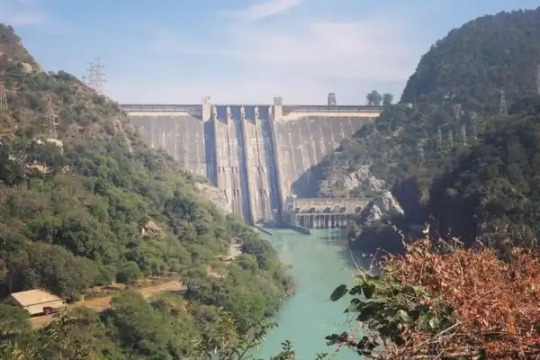
Hirakud Dam: The longest dam in India, stretching over 23 km, Hirakud Dam is a lifeline for the eastern state of Odisha. It provides irrigation, flood control, and 300 MW of hydropower.
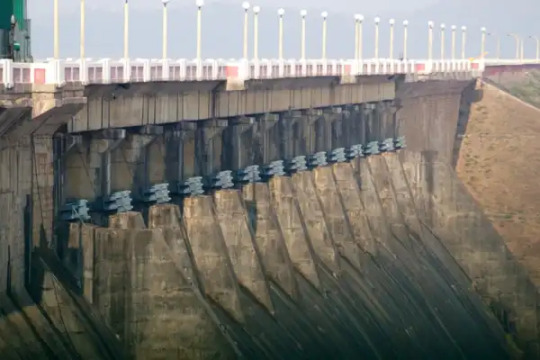
Nagarjuna Sagar Dam: This massive dam on the Krishna River is a key source of irrigation for Andhra Pradesh and Telangana. Its hydropower station generates 825 MW of electricity.
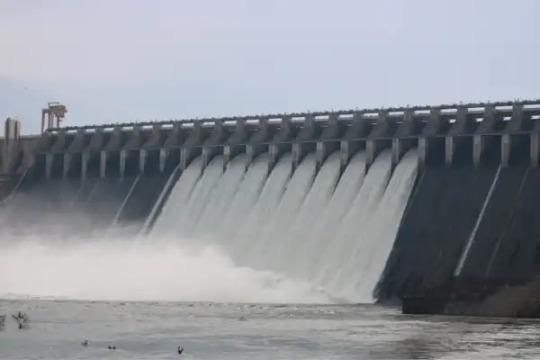
These are just a few examples of the numerous dams that dot the Indian landscape. Each dam tells a story of human ingenuity, collaboration, and the ongoing quest to harness the power of water for our benefit.
Future of Dams:
While dams offer undeniable benefits, concerns about their environmental and social impacts have emerged. Issues like displacement of communities, disruption of ecosystems, and downstream sedimentation are crucial considerations. As we move forward, responsible dam construction and exploring alternative renewable energy sources like solar and wind will be critical in ensuring a sustainable future.
Dams, with their imposing presence and intricate construction, serve as powerful reminders of our ability to shape the world around us.
0 notes
Text
8 Most Sustainable Buildings Around the World
As climate change grips the planet, the need for sustainable solutions has never been greater. One area experiencing a radical transformation is architecture, with innovative minds crafting “greener buildings” that minimize environmental impact and prioritize renewable energy. These architectural marvels showcase not only cutting-edge technology but also a deep respect for the planet.
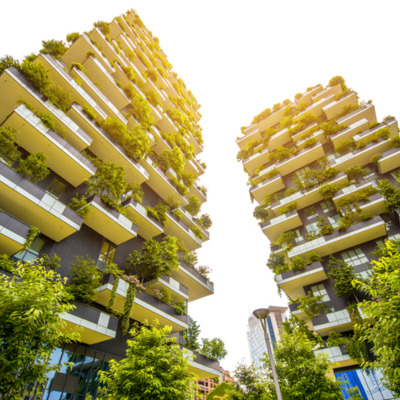
Bosco Verticale, Milan, Italy
The Bosco Verticale, or Vertical Forest, stands as a testament to Italy’s commitment to sustainable living. Designed by Stefano Boeri Architects, this pair of residential towers in Milan is adorned with lush greenery, hosting over 20,000 trees and nearly 5,000 shrubs. Not only do these green towers enhance the city’s skyline, but they also act as natural air purifiers, absorbing carbon dioxide and releasing oxygen.
One Central Park, Sydney, Australia
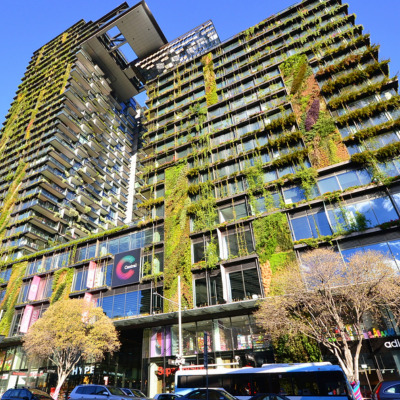
The Edge, Amsterdam, Netherlands
Amsterdam takes the lead in smart sustainability with The Edge, a futuristic office building. Designed by PLP Architecture, this energy-efficient marvel incorporates solar panels, rainwater harvesting systems, and smart lighting controls. The Edge has redefined the workspace, demonstrating that green buildings can be both environmentally friendly and technologically advanced.
The Crystal, London, United Kingdom
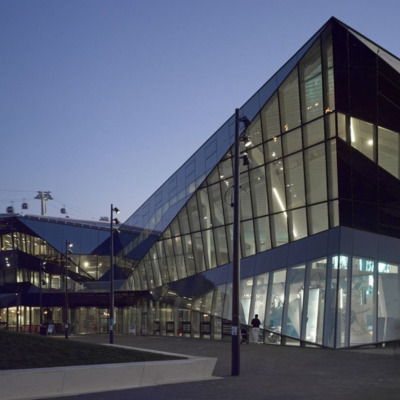
The Change Initiative, Dubai, United Arab Emirates
Dubai, known for its opulent skyscrapers, also houses The Change Initiative, a building dedicated to promoting sustainable living. This retail and office space, designed by HOK, incorporates energy-efficient systems and eco-friendly materials. The Change Initiative serves as a beacon in the desert, proving that sustainable practices can thrive even in the most challenging environments.
The Edge, New York City, USA

Bahrain World Trade Center, Manama, Bahrain
Bahrain takes a unique approach to sustainability with the Bahrain World Trade Center. This iconic structure, designed by Atkins, integrates three massive wind turbines between its twin towers. Harnessing the power of the wind, the turbines generate a significant portion of the building’s energy needs, showcasing an innovative way to incorporate renewable energy sources into urban development.
The Pixel Building, Melbourne, Australia
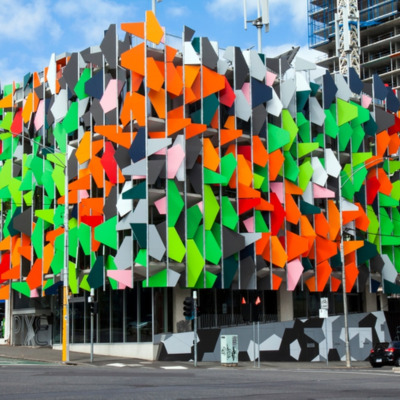
Greener Buildings for a Green Future
These are just a few examples of the incredible strides being made in sustainable architecture. From self-sufficient powerhouses to biophilic havens, these buildings showcase the immense potential of green design to create healthier, more resilient communities. As we move towards a more sustainable future, let these architectural marvels inspire us to build smarter, greener, and leave a lighter footprint on our planet.
#greener buildings#sustainable architecture#Sustainable Buildings#Sustainable Buildings Around the World
1 note
·
View note